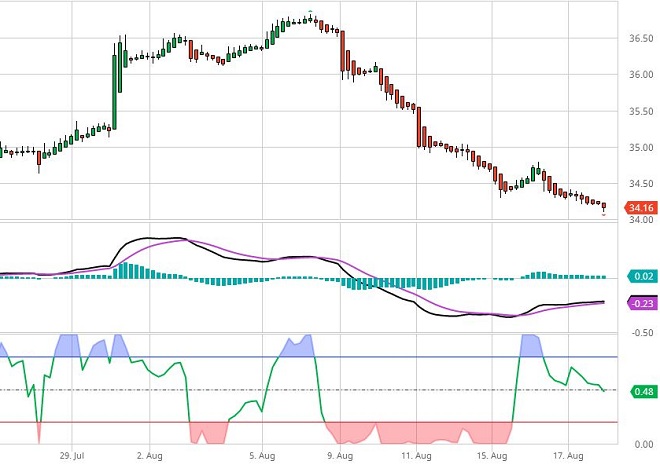 Despite reporting better than anticipated fiscal 2017 second-quarter earnings and revenue, the stock of BP Plc (NYSE: BP) has lost about 6% so far to trade at $34 levels.
Despite reporting better than anticipated fiscal 2017 second-quarter earnings and revenue, the stock of BP Plc (NYSE: BP) has lost about 6% so far to trade at $34 levels.
So far this year, the stock has lost nearly 13% of its value, making it the worst performer among the top five oil companies across the globe. One of the reasons for the decline in the share price is the year-over- year decline in earnings.
Additionally, as explained underneath, the breakeven price of BP is higher than most of the oil companies. Thus, we forecast the current bearishness to prevail in the short-term.
The oil major reported 2Q17 revenues of $57.37 billion, up about $10 billion from $47.28 billion last year, and greater than Thomson Reuters estimates of $50.62 billion.
BP
The company posted replacement cost (RC) profit of $553 million in the recent quarter, compared with a loss of $2.25 billion in the same period of 2016. Excluding charges for non-operating items of $215 million and favorable accounting effects of $84 million, underlying RC profit for the June quarter was $684 million, down from $720 million in the year-ago period, but greater than the Street estimates of $518.40 million. During the January-March quarter, BP reported underlying RC profit of about $1.50 billion.
But for the write-down of $750 million related to the unsuccessful project in Angola, the underlying RC profit would have been much higher. The company gave up its 50% stake in the project as it was adjudged to be commercially unattractive.
Segment wise, profit from upstream division, which includes exploration and production business, increased $29 million y-o- y to $710 million. Downstream division, which includes refining and marketing of oil, reported income of $1.41 billion, compared with $1.51 billion in the same period last year.
Cash flow during the quarter was $6.9 billion. After deducting payments related to Deepwater Horizon (oil spill), the cash flow was $4.9 billion in the second-quarter. In 2017, BP is expected to shell out between $4.5 billion and $5.5 billion for settlement related to Gulf of Mexico oil spill. Next year, BP is expected to pay another $2 billion. So far the company has spent $63.2 in cleanup costs and penalties.
The company declared a quarterly dividend of $0.10 per share, unchanged from last time. It is the second-quarter in a row where BP was able to pay dividends with free cash low.
Due to a series of acquisitions made at the start of 2017, BP requires crude oil price to be at least $60 per barrel for breakeven. Net debt at the end of second-quarter increased to $39.8 billion, from $30.9 billion last year. Likewise, net debt to capital increased to 28.8%, from 24.7% in the June quarter last year. This indicates that BP has not yet adjusted to lower oil prices. Thus, considering the unimpressive quarterly results, charges related to the oil spill, and high break even costs, we forecast a decline in the share price of BP.
The stock has broken below the support level of 35. Both the momentum indicators (MACD and Stoch RSI) are pointing to a downtrend. Thus, technically, it would be wise to stay short in the stock.

To capitalize on the report, we shall invest in a put option as long as the contract remains valid for a week. Additionally, we would like to enter when the stock trades near $34 in the NYSE.
